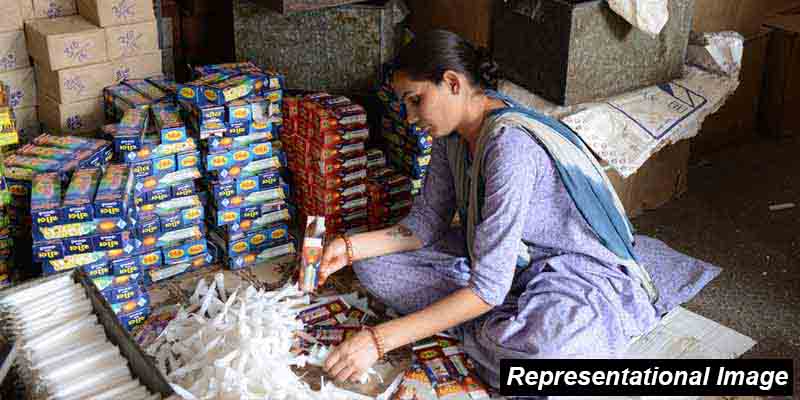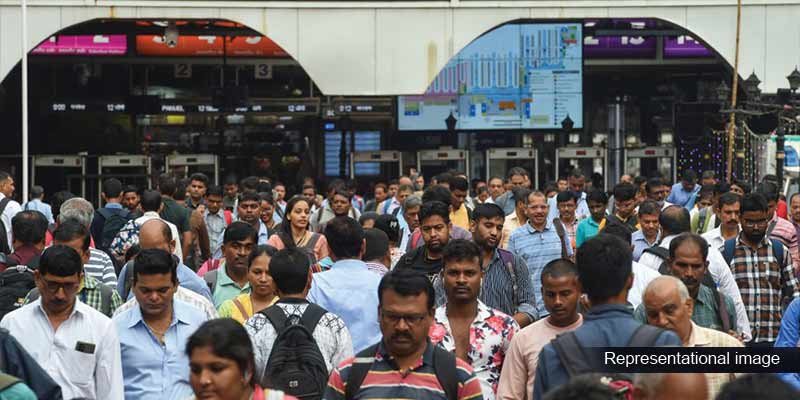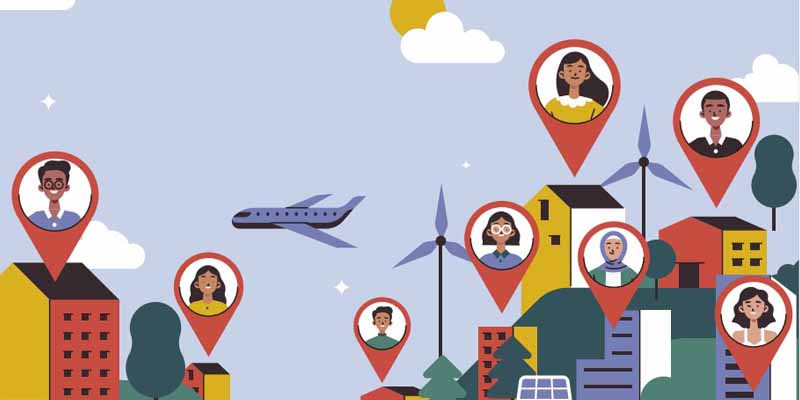- India
- Aug 14
Impediments in women empowerment
• Gender equality is a development goal in its own right, as well as a pre-condition for the achievement of many other developmental goals. Gender equality and women’s empowerment are addressed as explicit priorities through Sustainable Development Goal (SDG) 5 and by mainstreaming gender equality across the SDGs.
• Empowering women with equal opportunities is essential for inclusive economic growth. Creating a safer environment, free from violence and abuse, is imperative for women to participate fully in nation-building endeavors. This necessitates not only prioritising women’s safety by law enforcement but also fostering societal support systems.
• Educating women from a young age about their rights and dispelling stigmas surrounding crime reporting are crucial steps. Moreover, increasing female political representation can serve as a catalyst for change, providing role models for future generations and amplifying awareness of women’s issues.
• Every effort aimed to advance the status of women requires timely and accurate information on the situations of women and men.
• Understanding where, why and how gender inequality arises is a vital step in addressing problems and issues related to gender and development.
Some of the main issues are:
1) Violence Against Women
• Violence against women stands as one of the most pervasive, enduring, and severe human rights violations globally. Unfortunately, it often goes largely unreported due to factors such as impunity, societal silence, stigma, and the shame associated with such incidents.
• Broadly speaking, violence against women manifests in various forms, including physical, sexual and psychological dimensions such as:
i) Intimate partner violence (battering, psychological abuse, marital rape, femicide).
ii) Sexual violence and harassment (rape, forced sexual acts, unwanted sexual advances, child sexual abuse, forced marriage, street harassment, stalking, cyber-harassment).
iii) Human trafficking (slavery, sexual exploitation).
iv) Female genital mutilation.
v) Child marriage.
• Violence against women remains a significant barrier to achieving equality, development, peace, and the realisation of the human rights of women and girls.
• Ultimately, the commitment embedded in the Sustainable Development Goals (SDGs) to “leave no one behind” cannot be fulfilled without effectively addressing and putting an end to violence against women and girls.
• Three major crimes — cruelty by husband and relatives, assault on women with intent to outrage her modesty and kidnapping & abduction constituted more than 70 per cent of the total crime committed against women in India in the past five years.
• Data on distribution of rape victims by age-group show that majority of the rape victims are in the age group of 18-30 years. The likely explanation for the elevated numbers in this specific age group may be attributed to females within this range falling under the ‘labour force’ category, requiring travel between the workplace and home. Moreover, the prevalence of late working hours and on-site work locations could contribute to these statistics.
• Nevertheless, it is crucial to emphasize that such conditions should not serve as burdens or barriers impeding women's fundamental right to ‘work and earn’.
• To effectively reduce the rates of violence and crime, it is crucial that perpetrators face swift and timely punishment. The adage “justice delayed is justice denied” aptly emphasizes the importance of timely legal action.
2) Child Marriage
• Child marriage constitutes one facet of crimes against women, depriving girls of their childhood and posing threats to their lives and health. Girls who enter into marriage before the age of 18 are at a higher risk of experiencing domestic violence and are less likely to stay enrolled in school.
• As per National Family Health Survey (NFHS)-5 (2019-21), the percentage of women aged 20-24 years married before age 18 years has decreased from 26.8 in NFHS-4 (2015-16) to 23.3 per cent.
• Prevalence of child marriage is more than 40 per cent in Bihar, Tripura and West Bengal and between 30 to 40 percent in Assam and Jharkhand. It is disheartening to observe that the practice of marrying girls below the age of 18 is widespread in all states and Union Territories, despite existing legal provisions against it.
• This underscores the need for increased public awareness about the detrimental effects of early marriage on girls.
3) Technology Facilitated Violence Against Women
• Cybercrime against women refers to criminal activities that specifically target women through digital or online platforms. These crimes can take various forms and may include harassment, threats, stalking, non-consensual sharing of intimate images (revenge porn), identity theft, online bullying, and financial fraud.
• Cybercrime against women has become a growing concern with the increasing use of the internet and social media. In 2022, as many as 14,409 cybercrimes against women were reported in the country. Most number of crimes were reported in Karnataka (3,904) followed by Maharashtra (2,530), Telangana (1,262) and Uttar Pradesh (1,101).
4) Lack of Access to Higher Education
• Gender inequality in access to education affects career prospects and equality in work opportunities. Gender gaps in career expectations are related to deeply in-grained gender-stereotyped norms about which careers are suitable for men and women.
• In medical science, while female enrolment is higher than that of males in most of the fields, the major difference is reflected because of nursing. Female enrolment lags behind the male enrolment in commerce, engineering, IT & computer, management and law. In engineering, the difference in enrolment is quite striking as female enrolment is just 41 per cent of that of male enrolment.
• After achieving the desired enrolment rate in education, retention of the students in the education system becomes an important topic of concern.
• Investing in girls’ and women’s education in particular produces exceptionally high social and economic returns. Educated women invest more in their children and contribute to the welfare of the next generation. They are more likely to participate in the labour force, allowing them to earn an income, know and claim their rights, and attain greater influence in the household and public life.
• Education is essential for empowering women and for closing the gap between women and men in respect of socio-economic opportunities. It can reduce inequalities based on gender and alter the historical legacy of disadvantage faced by women.
5) Occupational Disparity
• Women continue to bear a disproportionate burden of poverty, discrimination, and exploitation. Gender-based discrimination frequently leads women into insecure, low-paying jobs, with only a minority managing to attain senior positions.
• This occupational disparity limits their access to economic resources, including obtaining loans. Various social barriers further restrict women from actively participating in activities that influence economic and social policies.
• Additionally, as women predominantly shoulder the majority of household responsibilities, they often find themselves with limited time to pursue economic opportunities.
• The participation of women in the labour force and their ability to secure decent work are crucial components of an inclusive and sustainable development process. Despite progress, women still encounter numerous barriers when entering the labour market and seeking access to quality employment.
• They disproportionately grapple with challenges related to employment opportunities, work preferences, working conditions, job security, wage equality, discrimination, and the delicate balance between work and family responsibilities.
• Moreover, a significant number of women find themselves in the informal economy, where they face heightened vulnerability to exploitation and lack formal protection.
• The substantial disparity between male and female representation in the workforce can be mitigated through strategic measures such as the implementation of improved incentive mechanisms, targeted training programmes, job reservations, and the establishment of safe workplace environments.
• These steps aim to create a more equitable and supportive framework that fosters increased participation of women in the workforce while addressing the specific challenges they confront.
6) Unpaid Caregiving and Domestic Duties
• The Time Use Survey conducted by the Ministry of Statistics and Programme Implementation (MoSPI) in 2019 reveals noteworthy patterns in the allocation of unpaid caregiving and domestic duties within households, particularly with regards to gender dynamics.
• Approximately 81 per cent of females dedicate around five hours daily to unpaid domestic services. This percentage is still higher at 92 for the age group 15-59 years. Even within the 60+ age group, 78 per cent of women contribute to unpaid domestic services.
• In the 15-59 age bracket, only 29 per cent of males participate in unpaid domestic services. The proportion of women providing unpaid caregiving services is twice that of men, with rates at 33 per cent and 16 per cent respectively.
• The data underscores that a significant number of working-age women spend over six hours daily on unpaid services, potentially restricting their access to paid employment. Women not in the labour force invest the most time in unpaid domestic services, hinting at a possible impediment to their involvement in paid work.
• These findings emphasize the importance of addressing gender-based imbalances in domestic responsibilities. Recognising the potential impact on women's economic engagement, policymakers and organisations can use this information to formulate strategies promoting a fairer distribution of domestic duties and facilitating women’s active participation in the workforce.
Manorama Yearbook app is now available on Google Play Store and iOS App Store



